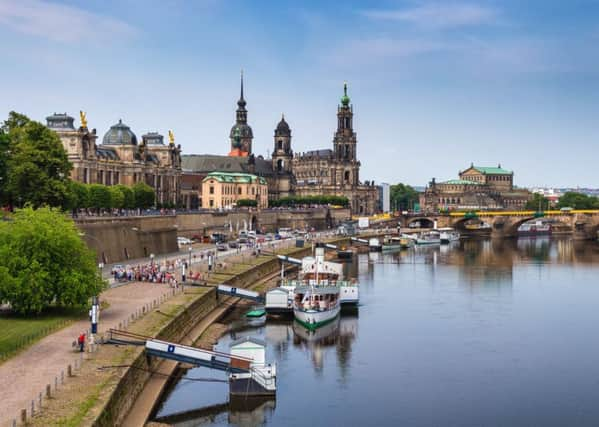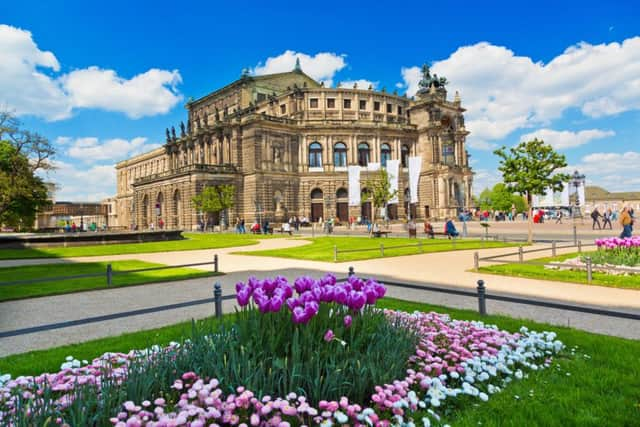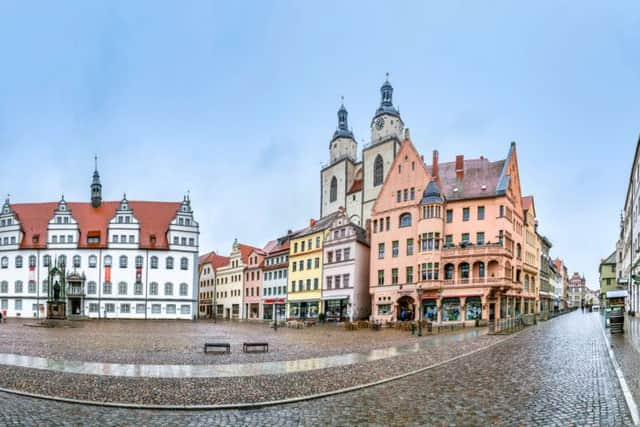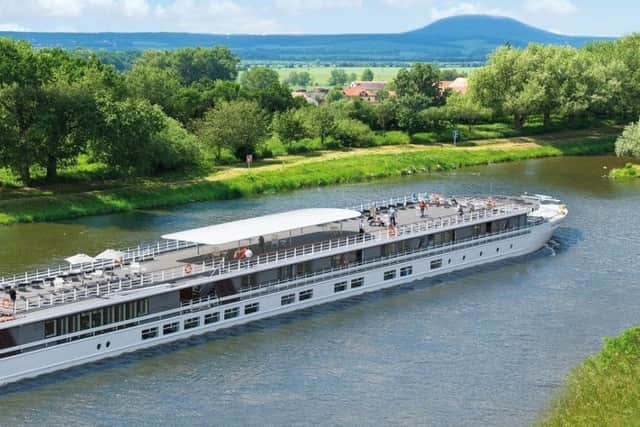Elbe cruise from Prague to Berlin, Scotland on Sunday travel


I love the pace of a river cruise, nothing too rushed, literally time to stop and stare. And CroisiEurope’s voyage on the River Elbe also offered the chance to explore a little of some of this part of Europe’s cities.
We were journeying from Prague to Berlin and our first ship was Elbe Princesse II, a new, beautifully designed vessel featuring cabins with clever storage, even cleverer bathrooms, and the joy of large beds facing on to Juliet balconies to give an up-close and comfortable view of the river.
Advertisement
Hide AdAdvertisement
Hide AdWe were only 80 guests on board and eager to meet our fellow cruisers, most of whom were English speaking – the majority American – and there were a few French guests, and they proved to be good, lively company.


The tours and guides provided a snapshot of the places, and our first impression of Prague was that its 9th century castle was like a fairy story illustration, and moving across the river to the old city and the town square, there were more turrets and spires piercing a blue sky with what appeared to be lace, but was stone. This is a very delicate setting for a turbulent history, reaching through to the 20th century and the Prague Spring. Charles Bridge, its most famous landmark was, as ever, crammed with tourists.
Also in the Czech Republic was Litomerice, and the snapshot there, was of a beautiful blend of Gothic, Baroque and Renaissance buildings with a serene central square, while the tour concluded with a most generous tasting of various Czech beers.
However, a coach journey of just a few kilometres outside the city was to take us to the site of Terezin (Theresienstadt) Concentration Camp, for a more harrowing encounter with history.
On we glided into Germany. The glorious autumn colours, trees dipping deep into the water, and glimpses of charming riverside settlements, all at such a stately pace, were balm to the soul. Then, appropriately, we reached Wittenberg Lutherstadt, known as the cradle of the Reformation, where we walked across the original cobbles of the main square and visited Luther’s home, now a museum. The upper chamber with its huge stove has the panelling and benches around the walls where his visitors and students would sit to listen and converse. So we could touch the same walls as Luther had. Footsteps of history.


Our coach driver and guide was genial Glaswegian, Ian, who had been stationed with the army in Germany, where he met his wife and settled. Now, 30 years on, he gave us valuable insights into the country as both an insider and outsider.
We drove on to Meissen, bigger and more important than Dresden in medieval times, and marvelled at the factory workings and displays of Meissen china in the shop and museum. The porcelain manufacturer also supplied the Frauenkirche’s carillon with porcelain bells, some 200 years late, while the city still awaits delivery of its porcelain pipe organ. Here we also learnt of life in the East German Democratic Republic, for our guide had lived in a house that was home to several families, and until reunification in 1990, they shared a dry drop toilet. In one of the GDR’s finest cities, there was no modern sanitation, and jobs and education were entirely dependent on party membership.
As we stood in the main square, another glorious Gothic space of spires and half-timbered buildings, we were also told of the popular wine bar, just behind the church, which offered excellent German cuisine, Saxon wines, and, since it had its very own museum of instruments of torture, the chance for diners to examine the odd thumbscrew, iron maiden, etc, as they ate. I heard a murmur: “Whatever floats your boat,” but then boats floating were very much on our minds.
Advertisement
Hide AdAdvertisement
Hide AdWe had left Princesse II and were en route to Dresden and a night in a hotel before transferring to our second ship, the Elbe Princesse I. This was for the very good reason that the water in the Elbe was so low that boats could not complete the whole journey, despite these two CroisiEurope vessels being paddle steamers which only require a draught of one metre of water. Indeed, we saw other cruise lines with their boats almost permanently moored, and passengers bussed all over on tours.


Dresden is, of course, beautiful. The Allied bombing destroyed most of the Baroque architecture in the centre of the city, but the decision was made to restore it in the original style, and today what you see is what you would have seen before 1945. We admired the riverside terraces, the Opera House and the Royal Palace, but I was most impressed by the Zwinger, an inner space of gardens and fountains surrounded by Baroque colonnades, an orangery and an art gallery where their best known exhibit is the exquisite The Chocolate Girl by Jean-Étienne Liotard.
Our German guide gave us his view of the Dresden bombing, and in Berlin, our final destination, we had yet another view of the war. Here the guide and his family counted themselves lucky to have been bombed out twice in the eastern sector, before settling in the western sector. Across the sectors we saw Checkpoint Charlie (now with camera-ready border guards, and a nearby Starbucks) the Holocaust memorial, the book burning memorial, some of the Berlin Wall, the paarliament, and because the ship moored in Wannsee, one of the park areas of Berlin, we saw the building where the logistics of the Final Solution were decided.
And if you think that the British are obsessed with the war, you should meet a German guide or two. All pointed these horrors out, and emphasised the lines on the pavements which denoted the separation of the sectors, and were thankful for the Allied Berlin Airlift which kept them alive post-war, which is marked by the C-47 bomber on the roof of the German Technology Museum.
We left our ship and tour and treated ourselves to one more night in Berlin at the Hotel Adlon Kempinski on Unter den Linden, facing the Brandenburg Gate. A hotel with history, fabulous breakfasts and a fine view of a very good-humoured anti-fascist demonstration and the city’s Festival of Light.
Finally, a reminder that government projects everywhere are disaster prone was the flight out of Schönefeld airport. Both it, and Tegel airport, we were told, are equally bad. Berlin’s new airport, BER, seven years overdue and 5 billion euros over budget has yet to open. Thank goodness for the comfort of river boats, and the lasting memory of the mooring lights piecing the gloom, as dawn broke on the beautiful Lake Wannsee.
FACTFILE
2019 prices for the Elbe cruise between Berlin and Prague start from £1,877 per person including all meals and drinks onboard. Cruises operate between March and October. Call CroisiEurope on 0208 328 1281 or visit www.croisieurope.co.uk